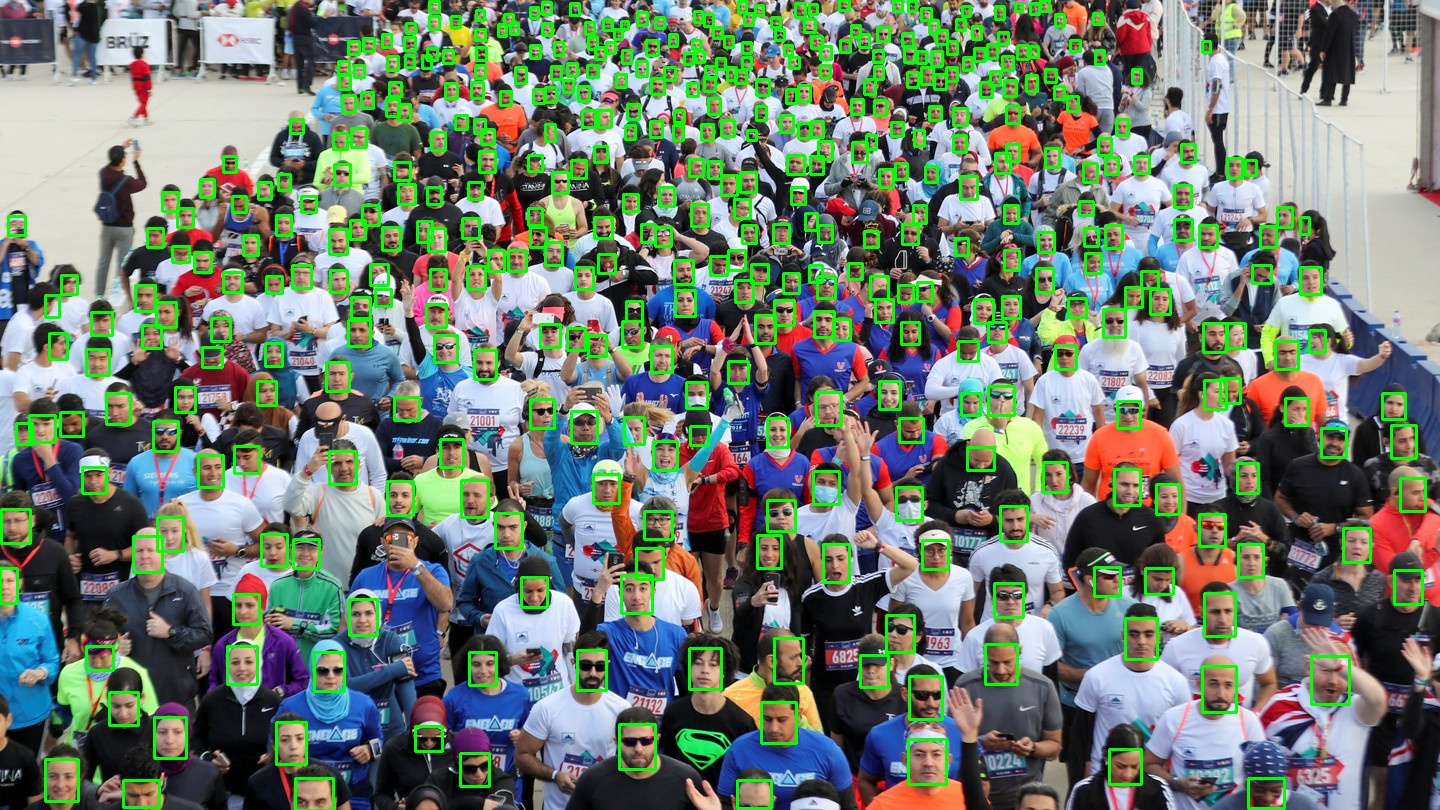This repo is build on top of https://github.com/biubug6/Pytorch_Retinaface
Train loop moved to Pytorch Lightning
IT added a set of functionality:
- Distributed training
- fp16
- Syncronized BatchNorm
- Support for various loggers like W&B or Neptune.ml
Hyperparameters that were scattered across the code moved to the config at retinadace/config
Augmentations => Albumentations
Color that were manually implemented replaced by the Albumentations library.
Todo:
- Horizontal Flip is not implemented in Albumentations
- Spatial transforms like rotations or transpose are not implemented yet.
Color transforms defined in the config.
In order to track the progress, mAP metric is calculated on validation.
pip install -U retinaface_pytorch
import cv2
from retinaface.pre_trained_models import get_modelimage = <numpy array with shape (height, width, 3)>
model = get_model("resnet50_2020-07-20", max_size=2048)
model.eval()
annotation = model.predict_jsons(image)- Jupyter notebook with the example:
- Jupyter notebook with the example on how to combine face detector with mask detector:
The pipeline expects labels in the format:
[
{
"file_name": "0--Parade/0_Parade_marchingband_1_849.jpg",
"annotations": [
{
"bbox": [
449,
330,
571,
720
],
"landmarks": [
[
488.906,
373.643
],
[
542.089,
376.442
],
[
515.031,
412.83
],
[
485.174,
425.893
],
[
538.357,
431.491
]
]
}
]
},
You can convert the default labels of the WiderFaces to the json of the propper format with this script.
pip install -r requirements.txt
pip install -r requirements_dev.txt
Example configs could be found at retinaface/configs
export TRAIN_IMAGE_PATH=<path to train images>
export VAL_IMAGE_PATH=<path to validation images>
export TRAIN_LABEL_PATH=<path to train annotations>
export VAL_LABEL_PATH=<path to validation annotations>python retinaface/train.py -h
usage: train.py [-h] -c CONFIG_PATH
optional arguments:
-h, --help show this help message and exit
-c CONFIG_PATH, --config_path CONFIG_PATH
Path to the config.
python retinaface/inference.py -h
usage: inference.py [-h] -i INPUT_PATH -c CONFIG_PATH -o OUTPUT_PATH [-v]
[-g NUM_GPUS] [-m MAX_SIZE] [-b BATCH_SIZE]
[-j NUM_WORKERS]
[--confidence_threshold CONFIDENCE_THRESHOLD]
[--nms_threshold NMS_THRESHOLD] -w WEIGHT_PATH
[--keep_top_k KEEP_TOP_K] [--world_size WORLD_SIZE]
[--local_rank LOCAL_RANK] [--fp16]
optional arguments:
-h, --help show this help message and exit
-i INPUT_PATH, --input_path INPUT_PATH
Path with images.
-c CONFIG_PATH, --config_path CONFIG_PATH
Path to config.
-o OUTPUT_PATH, --output_path OUTPUT_PATH
Path to save jsons.
-v, --visualize Visualize predictions
-g NUM_GPUS, --num_gpus NUM_GPUS
The number of GPUs to use.
-m MAX_SIZE, --max_size MAX_SIZE
Resize the largest side to this number
-b BATCH_SIZE, --batch_size BATCH_SIZE
batch_size
-j NUM_WORKERS, --num_workers NUM_WORKERS
num_workers
--confidence_threshold CONFIDENCE_THRESHOLD
confidence_threshold
--nms_threshold NMS_THRESHOLD
nms_threshold
-w WEIGHT_PATH, --weight_path WEIGHT_PATH
Path to weights.
--keep_top_k KEEP_TOP_K
keep_top_k
--world_size WORLD_SIZE
number of nodes for distributed training
--local_rank LOCAL_RANK
node rank for distributed training
--fp16 Use fp6
python -m torch.distributed.launch --nproc_per_node=<num_gpus> retinaface/inference.py <parameters>
https://retinaface.herokuapp.com/
Code for the web app: https://github.com/ternaus/retinaface_demo
The inference could be sped up on CPU by converting the model to ONNX.
Ex: python -m converters.to_onnx -m 1280 -o retinaface1280.onnx







